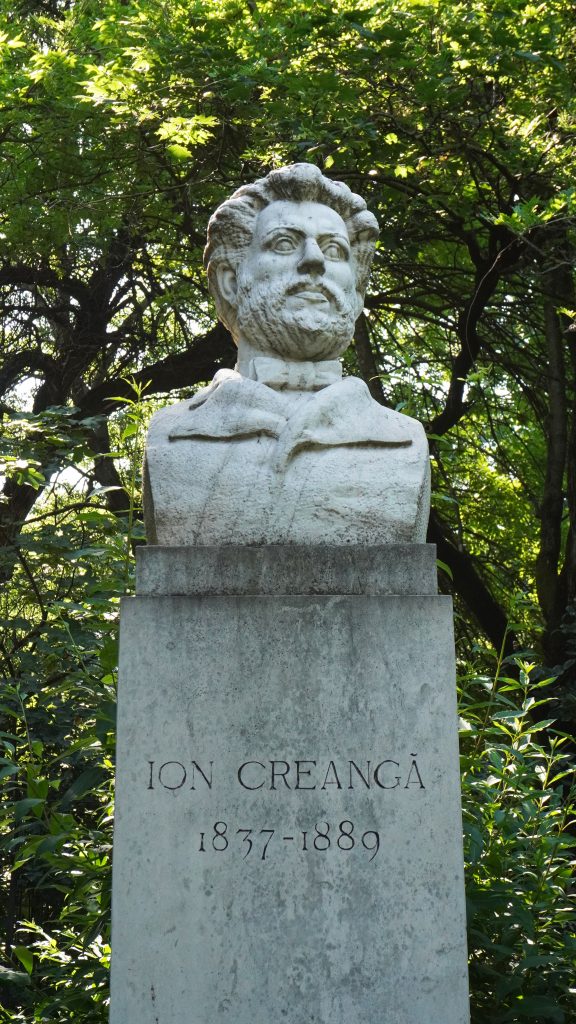
Despre monument
Bustul lui Ion Creangă este lucrat în marmură de către sculptorul Ion Gr. Jiga. Amplasat în 1960, este unul dintre cele douăsprezece busturi din Rondul Roman (Rotonda scriitorilor) din Grădina Cișmigiu.
La inaugurarea Rondului Roman, în 1943, pe locul ocupat acum de Ion Creangă se afla bustul lui Octavian Goga, sculptat de Ion Jalea. După 1944, după ce într-o noapte a fost nedemn mutilat cu ciocanul, bustul a fost înlăturat, soclul rămânând gol până când a fost instalat pe el bustul lui Ion Creangă.
About the monument
The bust of Ion Creangă is made in marble by the sculptor Ion Gr. Jiga. Placed in 1960, it is one of the twelve busts in the Rondul Roman (Writers’ Rotunda) in Cișmigiu Garden.
At the inauguration of the Roman Roundabout, in 1943, on the place now occupied by Ion Creangă was the bust of Octavian Goga, sculpted by Ion Jalea. After 1944, after one night it was unworthily mutilated with a hammer, the bust was removed, the plinth remaining empty until the bust of Ion Creangă was installed on it.

Despre personalitatea reprezentată

Ion Creangă este unul dintre Marii Clasici ai literaturii române.
Opera lui literară este alcătuită din povești (Soacra cu trei nurori, Capra cu trei iezi, Punguța cu doi bani, Danilă Prepeleac, Povestea porcului, Povestea lui Harap – Alb, Fata babei și fata moșneagului), povestiri (Acul și barosul, Inul și camesa, Moș Nechifor Coțcariul) si din romanul autobiografic Amintiri din copilarie.
Carte a copilăriei evocate din perspectiva depărtată şi duios-nostalgică a maturităţii, Amintirile lui Creangă reprezintă o operă unică în literatura, română prin forţa cu care a reuşit să comunice miracolul vârstei inocente, prin farmecul neegalat al limbajului şi prin umor.
Pentru mai multe informații, apasă aici
About the personality represented
Ion Creangă is one of the Great Classics of Romanian literature.
His literary work consists of stories (The mother-in-law with three daughters-in-law, The goat with three kids, The bag with two money, Danilă Prepeleac, The story of the pig, The story of Harap – Alb, The grandmother’s girl and the old man’s girl), stories (The needle and the sledgehammer, The flax and camesa, Moș Nechifor Coțcariul) and from the autobiographical novel Childhood Memories.
A book of childhood evoked from the distant and tender-nostalgic perspective of adulthood, Creangă’s Memories represents a unique work in Romanian literature by the force with which it managed to communicate the miracle of innocent age, by the unparalleled charm of language and humor.
For more information, click here